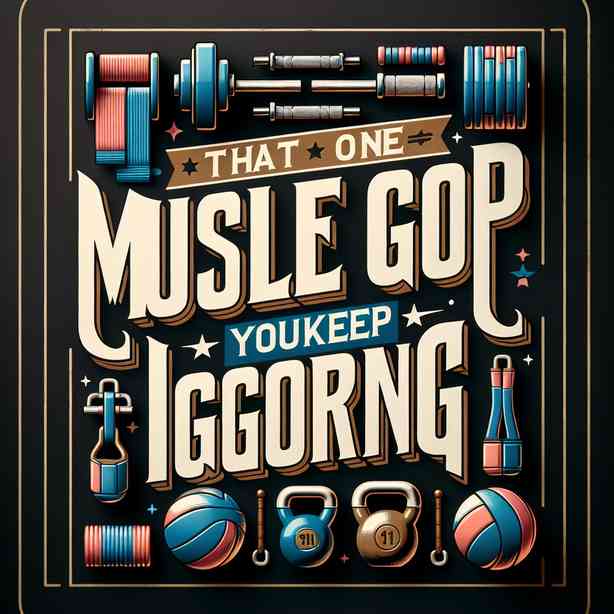
When it comes to fitness and strength training, we all have that one muscle group we tend to overlook. Whether due to habit or a lack of understanding, it’s all too easy to neglect certain areas of our bodies in favor of more visible or popular muscle groups. In this case, let’s delve into one specific muscle group that often gets ignored: the posterior chain.
The posterior chain is a term commonly used in the fitness community to describe a group of muscles located at the back of the body. This includes the hamstrings, glutes, lower back, and, to some extent, the calves. While many individuals focus on their chest, arms, and abs during workouts, the muscles of the posterior chain play a critical role in overall strength, posture, and athletic performance. Let’s explore why these muscles are vital for a balanced physique and how you can incorporate exercises targeting them into your routine.
One key reason to pay attention to the posterior chain is its contribution to proper posture. Weakness in these muscles can lead to an imbalance that affects your entire body alignment. For instance, a weak lower back can cause compensatory movements that strain the shoulders and neck. This often leads to discomfort and injury, especially if you spend long hours sitting at a desk. By strengthening the posterior chain, you promote better alignment and can alleviate strain on other muscle groups, ultimately leading to a healthier, more aligned posture.
Moreover, a strong posterior chain can significantly enhance athletic performance. Many athletic movements—such as sprinting, jumping, and even lifting—rely heavily on the strength and stability provided by the muscles in the back of the body. For athletes and active individuals, ignoring the posterior chain could result in decreased explosive power, speed, and overall physical capability. Therefore, to excel in various sports or physical activities, incorporating posterior chain exercises into your regimen is crucial.
Now that we’ve established the importance of the posterior chain, the next question is: how do we effectively strengthen these muscles? There are several excellent exercises that can help target the posterior chain, and we can categorize them into two main types: compound lifts and isolation exercises.
Compound lifts involve multiple muscle groups and joints, providing a more comprehensive workout. One of the most effective compound exercises for the posterior chain is the deadlift. This movement requires the engagement of the hamstrings, glutes, and lower back and can be performed with varying weights through different deadlift variations, such as sumo deadlifts or Romanian deadlifts. Another great compound movement is the barbell hip thrust, which specifically targets the glutes while also engaging the hamstrings and lower back.
On the other hand, isolation exercises focus more on one specific muscle group. For the posterior chain, exercises like glute bridges, hamstring curls, and back extensions can be highly beneficial. These exercises allow you to concentrate on the muscle’s activation, ensuring you are building strength in those areas effectively.
In addition to strengthening exercises, flexibility and mobility work is essential for maintaining a healthy posterior chain. Stretching the hip flexors, hamstrings, and lower back can alleviate tension and improve your overall range of motion, which is vital for both athletic performance and daily activities. Yoga and Pilates are excellent options to improve flexibility while also incorporating stability work for the core, indirectly benefiting the posterior chain.
It is also worth considering that the posterior chain plays a significant role in preventing injuries. Many common injuries, particularly lower back problems, arise from neglecting these muscles. By strengthening the posterior chain, you can create a more stable base, reducing the risk of injury during higher-intensity activities. For instance, ensuring that your glutes and hamstrings are strong can help prevent excessive strain on the lower back while lifting heavy objects or during weight training.
To sum up, it’s clear that paying attention to the posterior chain is vital for a balanced fitness regimen. Ignoring these crucial muscles can lead to poor posture, reduced athletic performance, and an increased risk of injury. By incorporating compound lifts and isolation exercises into your workouts, along with developing flexibility and mobility, you will strengthen and enhance your posterior chain.
Remember to also listen to your body as you train these muscles. Everyone’s fitness journey is different, and it is essential to find a balance that works for you. Gradually increase the intensity and volume of your workouts, and ensure you maintain good form to prevent any injuries.
Whether you’re an athlete looking to enhance your performance or someone who simply wants to lead a healthier lifestyle, do not overlook the importance of the posterior chain. By dedicating time and effort to strengthen this often-ignored muscle group, you’ll find improvements in your overall strength, athleticism, and even daily movements.
In conclusion, if you haven’t yet prioritized your posterior chain, now is the time to start. With the knowledge and right exercises at your disposal, you can create a stronger, healthier, and more balanced physique. Embrace the challenge, stay consistent, and reap the benefits of a well-rounded fitness routine. After all, the journey to fitness is not just about working on the front; it’s equally important to strengthen the back.


